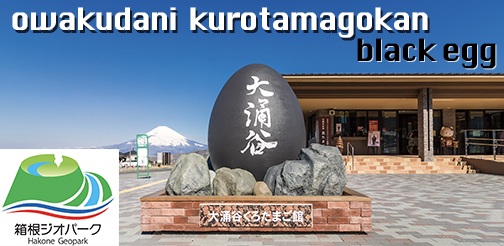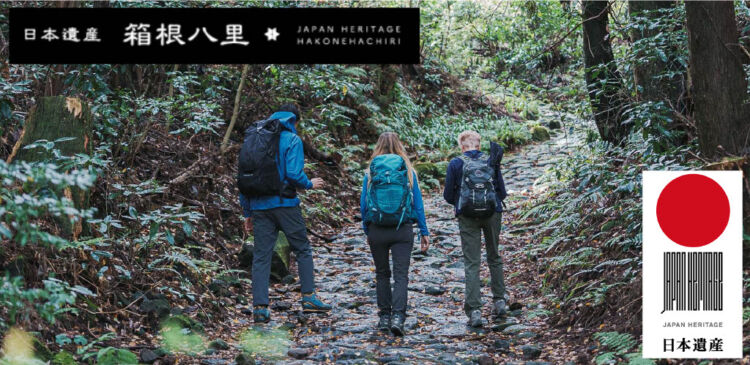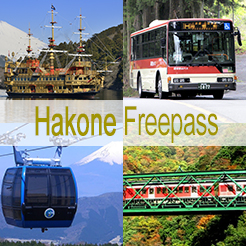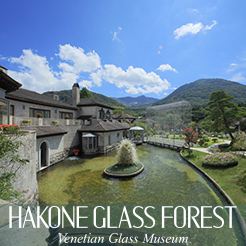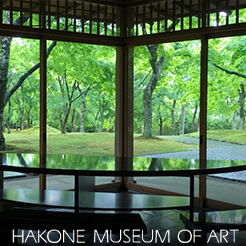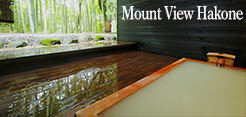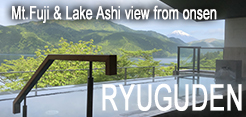Hakone is situated in a mountainous region close to Tokyo. On account of the wide diversity of elevation, there are fluctuations in the weather and climate throughout the year. In marked contrast to the oppressive heat of Tokyo, summers are cooler, and in the winter months, there is a strong possibility of experiencing snowfall. So let’s take a look at the weather in Hakone.
In the Hakone area, the months of spring begin early. There is the long-awaited Japanese season of cherry blossom, where the sakura bloom at different times—depending from area to area.
Sakura is first seen in the Yumoto area, then it comes to the middle Gora, and Miyagino regions. One sees it a little later around higher Lake Ashinoko. First comes Yumoto, then a few weeks later, Lake Ashinoko will be adorned with blossoms. Yumoto area is second to none to view the cherry blossoms at their best. Other renowned spots for viewing cherry blossoms would be along the Hayakawa River in Miyagino, also illuminated at night, and the nearby Prince Hotel on the shores of Lake Ashinoko. Moreover, all through the Hakone area, amidst mountain forests, wild cherry blossoms can be seen.
Foreign guests and residents of Tokyo, have long acclaimed Hakone as a summer retreat, for Tokyo is so hot and humid. Lake Ashinoko can be some five degrees cooler than at sea level. Then there is summer, a wonderful season in which to hike in the mountains. The Kowakien Yunessun has a generous complex of swimming pools to help the visitors cool down. Summer is also a time of festivals. As a matter of fact, a celebration lasting for a week on the shores of Lake Ashinoko also includes fireworks and live music! In Japan, August is the hottest month, afterwards comes the rainy typhoon season.
Hakone, with its colorful autumn foliage and the blaze of mountain leaves, entices the visitor at this time of year. Relax in the onsen, the Japanese hot spring, in the perfection of cool evenings. Then why not take in the scenery between Yumoto and Gora by riding the Hakone Tozan Mountain Train, to great advantage. It is advisable to select your route carefully, on account of congested roads. Around November, the autumn leaves begin to change their tints, starting in the upper Sengokuhara area, then ranging downwards to Yumoto.
Winter is also a wonderful season for those many visitors wishing to come to Hakone. The view of Mt.Fuji is outstanding in the translucent air of the winter months. Taking an onsen, for instance, in the cold air of winter-outdoors, is an unforgettable experience in contrast.
There are many seasonal events that are illuminated by night, to be seen throughout Hakone.
February sees snow in the upper parts of Hakone, Sengokuhara and Lake Ashinoko, usually at this time of year. The temperature can vary throughout from a low −7ºC to an upper 30ºC. The average temperature in the months of summer, July and August, is around 22ºC, it is evident that the oppressive heat does not last all that long.
However, in Hakone Yumoto, where the altitude is relatively low in comparison to the rest of the region, summer temperatures can go as high as 37ºC max., much the same as Tokyo. Sengokuhara, on the other hand, at an altitude of 645 meters, has a tendency to be three or four degrees cooler than Hakone-Yumoto. The climate of each area differs widely because of the disparity in elevation. Keeping all this in mind, one is well advised to take suitable clothing that can be layered easily according to the local seasonal temperature.




